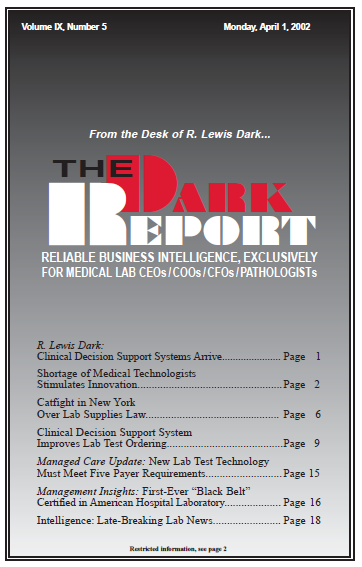IT WAS A BIG DEAL in the laboratory of Grant Riverside Hospital of Columbus, Ohio when Lab Site Manager Sandra Hood received her certification as a Six Sigma Black Belt on January 23, 2002. That’s because hospital administrators had selected the laboratory to be hospital’s guinea pig. Their goal was to gauge the effectiveness of …
First-Ever “Black Belt” Certified In an American Hospital Lab Read More »
To access this post, you must purchase The Dark Report.


